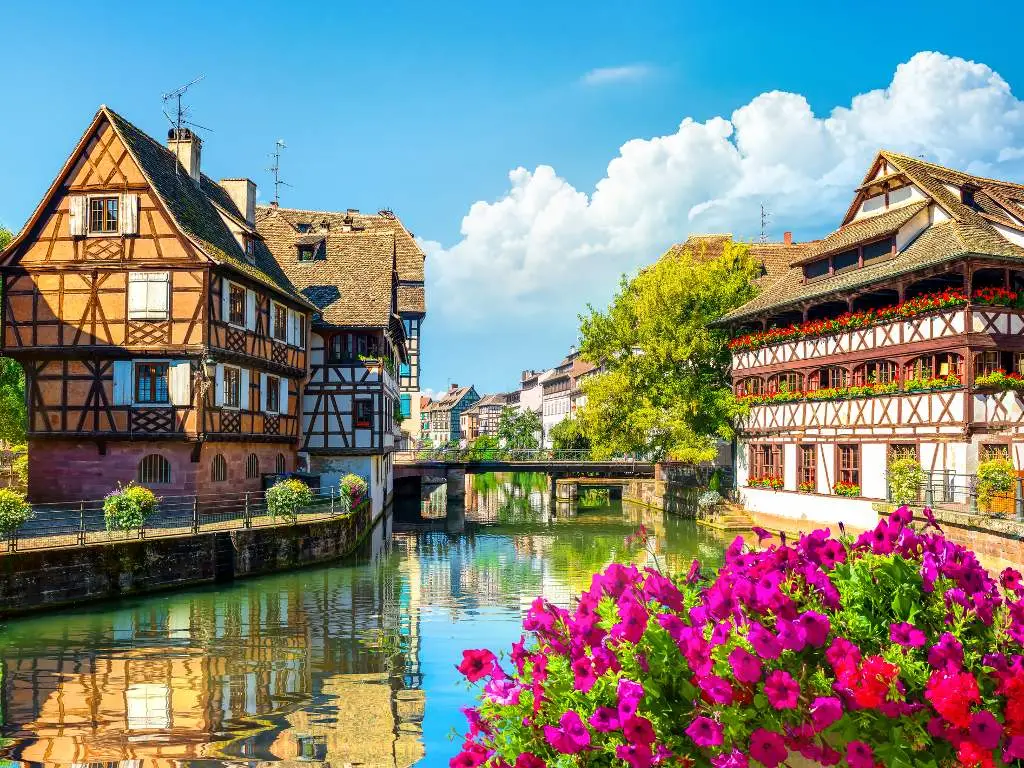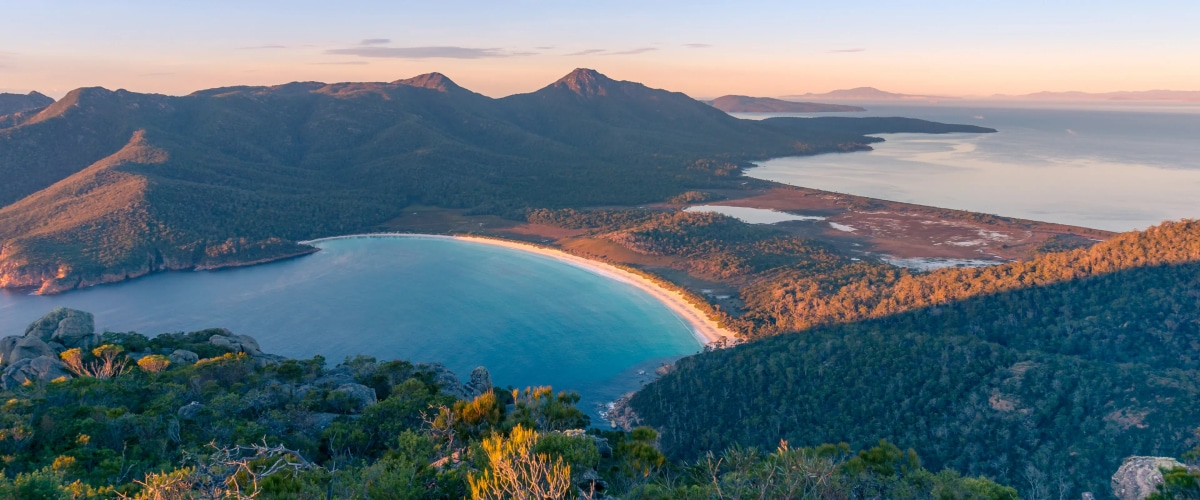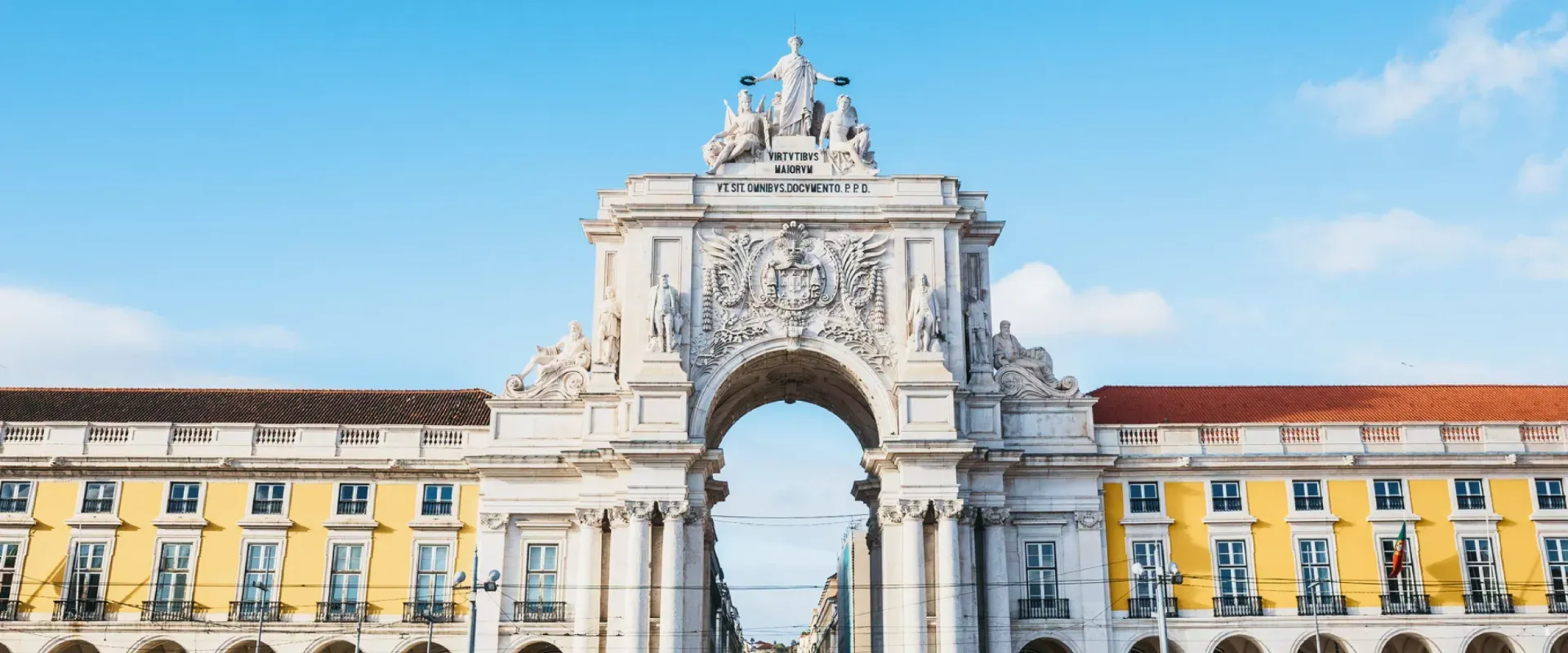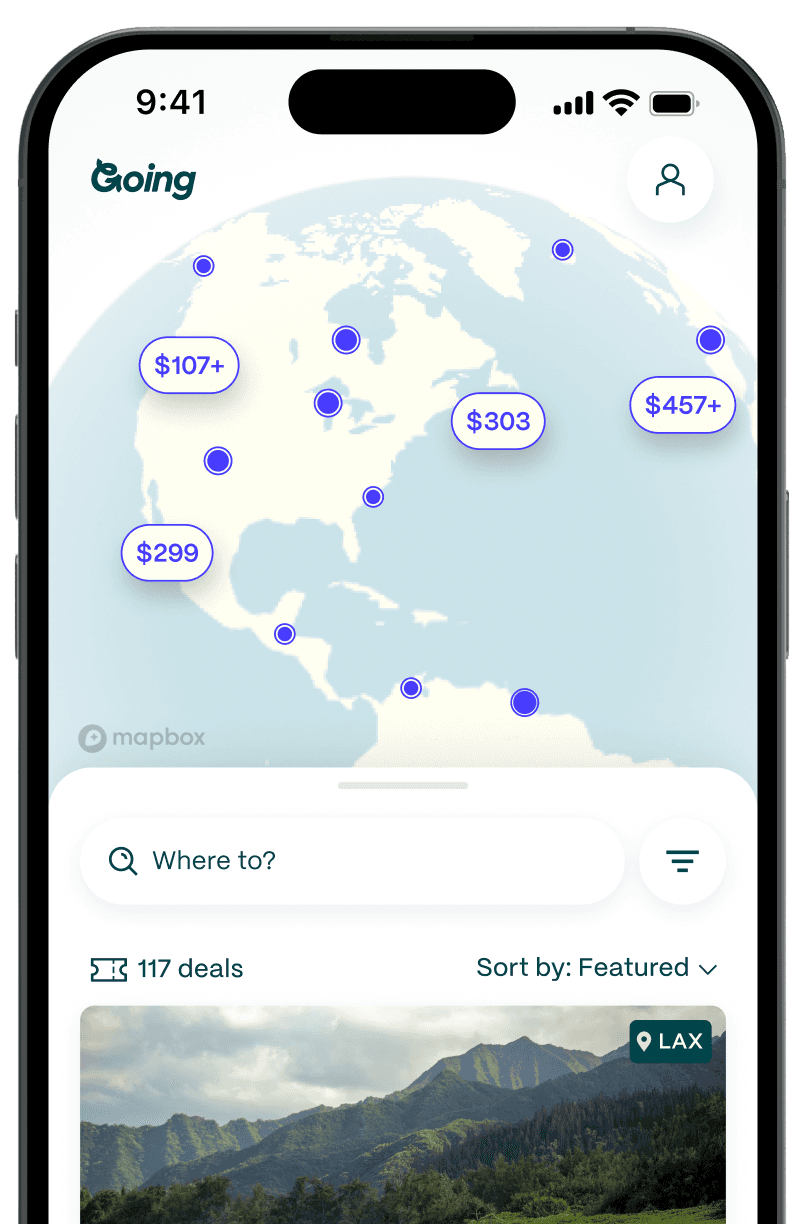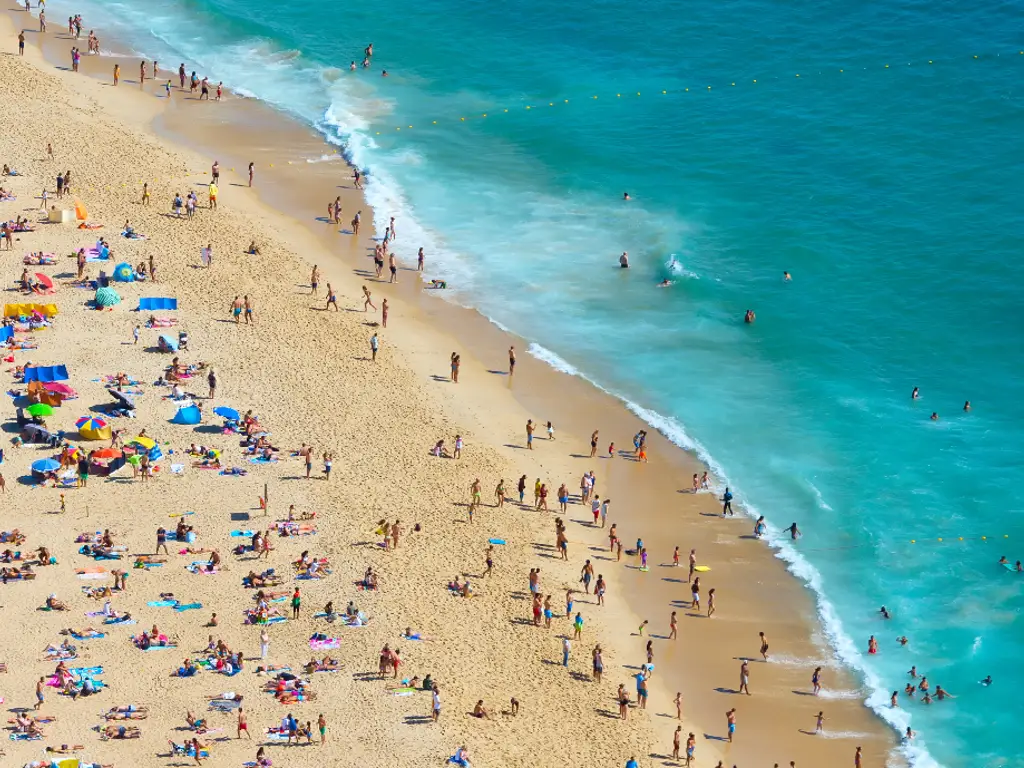
The 26 Best Day Trips From Lisbon in 2026 (By Train, Bus or Car)
Table of Contents
While it’s tempting to stay in Lisbon for days on end, it’s worth saving some time to explore the city’s equally stunning surroundings. Head northwest and you’ll run into the picturesque village of Sintra with its fairytale-like palaces and castle. Travel along the coast to hit the beaches of Cascais and Costa da Caparica. Or give Portuguese wine a try by touring the wineries of Azeitão or Évora down south.
One thing is certain: You’ll never run out of things to do as long as you have Lisbon as your jumping off point.

Renting a car in Lisbon
Lisbon is a relatively small city. You don’t need a car in the city center, as the narrow streets can be challenging to navigate and parking is limited. If you want to save your legs (it’s a hilly city, after all), you’re better off taking public transport or an Uber. When purchasing tickets for Lisbon's urban transport network (metro, buses, and trams), buy a rechargeable card from the ticket booths. Once you have the card, top it up with money as you go; the card can also be used for train routes that originate in Lisbon to destinations outside of the city.
Having a car may be handy if you're heading to remote beaches or rural towns. You can rent a car right from the airport, but for the best rates, it’s best to book in advance. Websites like Rentalcars or Discovercars allow you to compare prices between rental companies. Generally, you’re not required to have a foreign driver’s license unless you’re staying more than six months.
Even if you don’t have a car, there are plenty of destinations that you can reach from the capital by train or bus. The national railway, also known as CP, covers many coastal towns, while buses from Rede Expressos can take you deep into the countryside. Tickets for long-distance trips can be purchased online, and if you book a few weeks in advance, you’ll often get a discount.
Best day trips from Lisbon
Cascais: 40 minutes by train

If you’re in the mood for a beach day, head west to Cascais. This affluent resort town is part of the Portuguese Riviera. In the 19th century, royals flocked here for a swim in the sea, and you can see remains of the era in the noble mansions lining Cascais’ waterfront. Its popularity hasn't dipped either, with tourists and locals hitting the town every summer.
Bring your beach towel and parasol (a light umbrella used for sun protection), or rent one there. Head toward the center, popping by Santini for homemade gelato before taking on the cobblestone streets leading to the marina and the town’s main garden, Parque Marechal Carmona. Peacocks wander through the park, which is also home to a 16th-century chapel and a museum with tiled-covered rooms. Around July, the town becomes the stage for the Cool Jazz festival. Other attractions include Santa Marta Lighthouse and Casa das Histórias Paula Rego, which showcases pieces by the late Portuguese visual artist. The striking terracotta building was designed by award-winning architect Eduardo Souto de Moura. You can rent a bike from local kiosks (or through apps like Bird) and cycle along the waterfront toward Guincho Beach, stopping at the Boca do Inferno rock formation to take in ocean views.
How to get to Cascais
Trains to Cascais depart from Lisbon’s Cais do Sodré station. The journey takes around 40 minutes, and round-trip tickets cost €4.60 (€3.80 with a rechargeable card).
Sintra: 1 hour by train

With its majestic mountains and romantic palaces, Sintra is the stuff of dreams (and Instagram feeds). Step off the train right into the old town, where you’ll find the National Palace of Sintra, a 14th-century palace once a summer retreat for Portuguese royalty. From the palace, you can easily reach other attractions on foot, like Quinta da Regaleira (a mystical park featuring an initiation well and hidden tunnels) and the Biester Palace (a 19th-century Romantic palace surrounded by lush gardens). Also in the center of town is Casa Piriquita, a pastry shop selling famous travesseiros, a delicious puff pastry with a sweet filling of almond and egg yolk. A bit further on is Monserrate Palace, the Moorish Castle, and Palácio Nacional da Pena. While it’s possible to walk to these monuments, it can be strenuous because of the distance and hilly terrain; your best bet is to hop on a bus or book a tuk-tuk ride.
On a day trip, you’ll realistically be able to hit two or three monuments. If you must choose, opt for Palácio Nacional da Pena, the Moorish Castle, Quinta da Regaleira, and a pastry at Casa Piriquita. If you have longer than a day, in the summer, an old-style tram takes you to Sintra’s coastline, stopping at Praia das Maçãs—a golden sand beach frequented by surfers, bodyboarders, and swimmers. Attached to the beach is a saltwater pool ideal for families. Sintra’s surrounding hills also offer plenty of hiking opportunities, ranging from easy to difficult. One of the most popular easy hikes is the Santa Maria Trail, which covers the Moorish Castle and the Palácio Nacional da Pena.
How to get to Sintra
Many companies offer guided tours from Lisbon to Sintra’s main attractions. You can also rent a car and do a self-guided tour. However, cars are only allowed in specific areas of town, and parking is limited. Take a train from Lisbon’s Rossio station for about an hour to Sintra. Roundtrip tickets are €4.60 (€3.80 with a rechargeable card).
Get the cheapest flights to Lisbon now!
Azenhas do Mar: 1 hour by car

Perched on a cliff, Azenhas do Mar stands out, with its rows of whitewashed houses tumbling down toward the sea. This postcard view has inspired many Portuguese painters over the years, like Júlio Pomar and Alfredo Keil, who composed Portugal’s national anthem. The village gets its name from the old millstones (azenhas) that used to stand here and its seaside location (mar). Few tourists make it this far, as the town isn’t the easiest to reach. You’ll need a car or a combination of public transport, but it’s definitely worth the detour.
Enjoy the views from the Azenhas do Mar viewpoint on top of the cliff or head down to the water, where a tiny 98-foot-wide beach (which often disappears at high tide) and natural pool await. The pool is fed by a nearby stream and the occasional sea water that comes in. A stone wall protects it from the waves, but it's good to be cautious when the sea gets rough. After a swim, treat yourself to a seafood meal at the Restaurante Azenhas do Mar. Overlooking the ocean, the restaurant serves fresh grilled fish and other seafood delicacies like barnacles and lobster, all from the Portuguese coast.
How to get to Azenhas do Mar
The village is about an hour drive from Lisbon. Alternatively, you can head to Sintra and catch a bus from Avenida Dr. Desidério Cambournac 1 to Azenhas do Mar, which takes around 40 minutes (approximately €6 roundtrip).
Costa da Caparica: 30-45 minutes by car or bus

Across the Tagus River from Lisbon are the sprawling sandy beaches of Costa da Caparica. With about 18 miles of coastline, there is plenty of space to park your towel. Escaping to Costa da Caparica is somewhat of a local tradition, so much so that there’s a song about chasing the sun in Caparica (look up Peste & Sida’s “Sol da Caparica”).
Fonte da Telha is a favorite spot among families and surfers, as it has a couple surf schools. Hop on the seasonal beach train, Transpraia, for a fun way to access town. Praia do Castelo attracts young groups of friends, while Praia Adiça is reserved for nudists. Most beaches are lined with lively bars and seafood restaurants where you can grab a meal between swims. In the summer, vendors sell bolas de berlim, a doughnut-like sweet dusted with sugar and filled with a delicious egg custard cream. Stroll along the Rua dos Pescadores, a historic street that dates back to the 18th century when fishermen began settling there and has since been revamped to include shops and cafés.
How to get to Costa da Caparica
Drive about 30 minutes from Lisbon to Costa da Caparica, or catch the 3710 bus from the Sete Rios terminal (45 minutes, about €6 roundtrip). Keep in mind: Traffic does get a little crazy in the summer months, meaning the journey could take an hour or more.
Ericeira & Mafra: 1 hour by bus

Just over 30 miles northwest of Lisbon is Ericeira, Europe’s first World Surfing Reserve. Surfers have been flocking here since the 1970s, attracted by the mix of waves that range from beach break to powerful reef breaks. (Among the most iconic breaks are the Ribeira d’Ilhas and Coxos.) There are plenty of surf schools around, where you can book a lesson or rent a board if you already have experience. Even if you’re not chasing the waves, you can always hit the beach for a swim.
The village's slow-paced atmosphere also makes it an ideal place to spend a couple of days away from the city bustle. Many expats looking to be one step away from the sea move here, yet there’s something authentic about this place, with its traditional white houses trimmed in blue (a popular sight in Portugal’s coastal towns) and top-notch seafood restaurants. Around spring, keep an eye out for ouriço do mar (sea urchin) on restaurant menus; it’s one of the town’s local delicacies.

A short drive from Ericeira is the town of Mafra, home to a vast forest with deer and an 18th-century royal palace. This Baroque masterpiece was commissioned by King D. João V, who went all out with the decor. Inside, you’ll find Italian and Portuguese artworks, carillons, organs, and a large library with over 38,000 volumes. If you have a car you can easily do both towns in one day; without a car, it might be a bit tight.
How to get to Ericeira and Mafra
Buses to Ericeira and Mafra depart from the Campo Grande station in Lisbon. The journey takes around one hour (€9 roundtrip). If you want to cover both towns in one go, it’s best to drive.
Setúbal: 1 hour by train or bus

Historically a fishing city, Setúbal is renowned for its delicious seafood. Choco frito (fried cuttlefish) is the top dish here, but you’ll also find plenty of grilled fish on the menu. Around the 20th century, this was one of the largest canning centers in the world. There are still a few factories around, though not as many as there used to be. Visitors can learn about the town’s old canning industry at the Museu do Trabalho Michel Giacometti, housed in a former factory.
Another must-see is the Mercado do Livramento, a bustling food market supplying locals and restaurants with fresh produce. Dolphin-watching is also popular here; boat tours depart from Setúbal or the nearby Troia peninsula year-round, but the best time to catch the dolphins is between April and October. The common bottlenose dolphin and the short-beaked common dolphin are the main species you'll see here, although you may occasionally spot a small whale.
How to get to Setúbal
From Lisbon, you can hop on a bus or train to Setúbal. Carris Metropolitana and Rede Expressos run the buses; Fertagus operates the trains. Both options take about one hour and depart from Sete Rios. Buses range from €9 to €12 roundtrip, while trains cost about €10.
Sesimbra & Arrábida Natural Park: 40 minutes–1 hour by car or bus

Sesimbra is a seaside town surrounded by Arrábida Natural Park, a lush mountain range spanning nearly 70 square miles and featuring chalk cliffs and shrubland. Many tour companies organize activities in Sesimbra, from diving to mountain climbing and coasteering—a sport that involves traversing the coastline by walking or swimming, without the aid of a boat or other watercraft.
The town itself is famous for its paradisiacal beaches with crystal-clear waters. Many sit in remote locations at the bottom of cliffs you can only reach by boat or walking down a rocky path, like the Praia do Ribeiro do Cavalo. The Lagoa de Albufeira is in a flatter location subject to winds from the north and west, making it an ideal spot for surfing and bodyboarding. You can rent equipment or book a lesson at the Meira Pro Center.
Beyond the beach, Sesimbra is home to a medieval castle and plenty of seafood restaurants where you can taste the fresh catches of the day, anything from sea bass to octopus. In June, you’ll see sardines on the menu too. If you’re up for a hike, many scenic trails, ranging from easy to difficult, take you through the mountains of the natural park. For a smooth walk along the sea, follow the PR3 STB, a one-hour trail connecting Praia do Creiro to Portinho da Arrábida. You can also book a dolphin-watching boat tour directly from the Sesimbra marina.
How to get to Sesimbra
The 3721 bus takes you from Sete Rios to Sesimbra in about one hour (€9 roundtrip). You can also drive there in 40 minutes. For a picturesque route through the natural park, follow the N379-1. Note that some roads may be closed in the summer, and some beaches are only accessible by foot or boat.
Óbidos: 1 hour by bus

With little more than 3,000 residents, Óbidos is a tiny medieval village located about 53 miles north of Lisbon. A fortified wall surrounds the town and its maze of cobbled streets. The hilltop, 12th-century Moorish castle was converted into a hotel in the 1950s, but you can still walk along its battlements and admire the town’s colorful cottages.
While you’re here, try ginjinha at the town’s gift shops or bars, such as Bar Ibn Errik Rex; the delicious sour cherry liqueur originated in this region around the 17th century, as the microclimate was ideal for growing the fruit. It can be served in a glass or inside a chocolate cup (somehow even more delicious). Óbidos also hosts many events throughout the year, including a literary festival in October that takes over the town’s quirky bookshops (one is inside a former church) and includes a mix of readings, exhibitions, and live concerts. In July, there’s the medieval fair, which attracts tens of thousands of visitors to see historical reenactments and horseback tournaments.
How to get to Óbidos
While there is a train station in Óbidos, the buses stop much closer to the town. These depart from Campo Grande in Lisbon and take about one hour (€17 roundtrip).
Peniche & Berlengas: 1.5 hours by car or bus

A few miles west of Óbidos is Peniche, a small seaside town popular among surfers and divers. It's a unique spot thanks to the transparent waters and diverse wildlife, including streaked gurnard, sunfish, and octopus. Beyond the beaches, the main attractions are a 16th-century fortress and the Cabo Carvoeiro Lighthouse, both sitting right on the edge of a cliff. The fort is temporarily closed, but you can still capture it from a distance, and while you can’t visit the lighthouse, you can walk around it and enjoy the sea views. As you’re on the west coast, it’s a prime spot for sunset.

From the Peniche Marina, you can take a 30-minute ferry ride (45 minutes if the sea is choppy) to Berlenga Grande, the only inhabited island in the Berlengas archipelago. The area is often subject to powerful storms and is notorious for causing shipwrecks. The military fort you see today was built on the site of a former monastery that provided shelter to rescued shipwrecked sailors. If you fancy spending the night in the fort, reach out to the Associação dos Amigos das Berlengas. You’ll need to bring your own bedding, but nothing beats waking up to those ocean views.
The islands are part of a protected nature reserve, so they limit the number of daily visitors. To guarantee a spot, book your boat tickets in advance. The surrounding sea caves are ideal for scuba diving, and you can even dive some of the shipwrecks. If you book a diving trip, it often includes a private boat ride to the archipelago, which is much faster than the ferry.
How to get to Peniche and Berlengas
It takes about 1.5 hours to get from Lisbon to Peniche. You can drive there or catch the Rede Expresso bus from Sete Rios (€18 roundtrip). The ferry to Berlengas departs from Peniche’s marina but only runs from mid-May to early-September. Tickets start at €15 roundtrip (€10 for children between 4 and 12).
Évora: 1.5 hours by train or bus

There’s a reason why the historic center of Évora was deemed a UNESCO World Heritage site in 1986. Between its Corinthian-style, 1st-century Roman temple, megalithic monuments (far older than Stonehenge), and ties to Portuguese royalty, Évora is a place for history buffs. It’s also the capital of Alentejo, Portugal’s agricultural heartland.
Climb to the cathedral's rooftop for the best views in town overlooking Évora’s cobblestone streets and the surrounding countryside. Feel the eerie atmosphere of the bone chapel at Igreja de São Francisco. Or check out thousands of artifacts ranging from the Neolithic period to 20th-century paintings housed inside the Museum Frei Manuel do Cenáculo, revealing the city’s changing taste and civilizations.
How to get to Évora
Évora is located about 80 miles east of Lisbon. You can get there with the Rede Expressos bus (starting at €8 roundtrip) or a train from Sete Rios (starting at €14 roundtrip). Both services take around 1.5 hours.
Fátima: 1.5 hours by car or bus

Portugal has a strong religious background, with nearly 80% of the population considering themselves Catholic. Churches dot the entire country, but perhaps the most important site is the Sanctuary of Our Lady of Fátima. What started as a small chapel in 1919 grew into a huge shrine surrounded by multiple chapels and basilicas to welcome the inflow of pilgrims.
Every year, thousands of pilgrims head to Fátima, where three young shepherds are said to have witnessed the apparition of the Virgin Mary in 1917. Because of this, most attractions are sacred sites; they are open to visitors, but some can be off limits during masses or other religious ceremonies. The main attractions are the Chapel of the Apparitions (the oldest monument that marks the place where the apparitions took place), the Basilica of Our Lady of the Rosary with its striking 213-foot bell tower, and a classical colonnade. The most recent site is the Basilica of the Most Holy Trinity, designed by Greek architect Alexandros Tombazis and inaugurated in 2007. If you’re driving, you can combine your tour with a guided tour to nearby Grutas da Moeda, an impressive limestone cave about 1,000 feet long.
How to get to Fátima
The best way to get to Fátima from Lisbon is by car or bus. Buses depart from Oriente and Sete Rios, and the journey takes approximately 1.5 hours(€25 roundtrip). The town is 80 miles north of Lisbon.
Curious about flight prices movement? Find out when flight prices drop and learn how to book at the best time for maximum savings!
Tomar: 1 hour 45 minutes–2 hours by car or train

This small riverside town northeast of Lisbon was once the seat of the Knights Templar (medieval crusaders of the Catholic faith). Tomar’s prized monument is the Convento de Cristo, a complex featuring a 12th-century stone castle (founded by Portuguese crusader Gualdim Pais) and a large Renaissance convent introduced by King João III. Visitors are welcome to explore the grounds of this UNESCO World Heritage site, which has been featured in films such as Terry Gilliam's The Man Who Killed Don Quixote.
After visiting the convent, you can explore other beautiful churches, like the Igreja de São João Baptista and the church of Santa Maria do Olival, which holds the tomb of Gualdim Pais. Other attractions in town include a synagogue and a museum showcasing an overwhelming collection of matchboxes. Every four years in July, thousands of people gather around Tomar to see the colorful parade for Festa dos Tabuleiros (Festival of the Trays). Women wear long white dresses and carry tall trays on their heads covered with paper flowers and bread. Some say it began as a harvest festival in honor of Ceres, the Roman goddess of agriculture; now, it’s mostly a Christian celebration devoted to the Holy Spirit.
How to get to Tomar
The journey from Lisbon to Tomar by car takes about 1 hour 45 minutes, but you can also get a train from Santa Apolónia, which takes 2 hours. Tickets start around €18 roundtrip.
Nazaré: 2 hours by bus

If you’re a surfer, odds are you’ve heard of Nazaré. This unassuming coastal town has made international headlines thanks to its giant waves that can reach 85 feet tall. These mainly occur at Praia do Norte and should only be ridden by experienced surfers. The best time to catch them is between October and February. Even if you can’t hit the waves, you can always experience the spectacle from a distance at the Forte de São Miguel Arcanjo. For a more relaxed atmosphere, try the beach closer to town, Praia da Nazaré.
A beloved tradition in Nazaré is the drying of fish, where local women (often the wives of fishermen) set up racks by the beach. This technique was introduced to preserve food in times of scarcity and is mainly used to dry species like mackerel, sardine, and octopus, all abundant in the area. It’s rare to find them at restaurants, as most get sold for people to consume at home. To learn more about the origins of this tradition, visit the Dry Fish Museum. And after exploring downtown, hop on the funicular from Rua do Elevador to Sítio, a neighborhood up the hill offering incredible views of Nazaré and its beaches.
How to get to Nazaré
Nazaré is located about 75 miles north of Lisbon. There’s a bus from Sete Rios to the town, which takes around 2 hours and costs approximately €23 roundtrip.
Batalha and Alcobaça: 1 hour 45 minutes–2 hours by car or bus

Located about 75 miles north of Lisbon, the towns of Batalha and Alcobaça are renowned for their Gothic-style monasteries. They’re about a 30-minute drive from each other, so you can easily combine this into a single day if you have a car.
The Monastery of Batalha was one of the first buildings in Portugal to welcome stained glass windows. Initially implemented at the end of the 1430s, they feature a mix of figurative compositions, vegetal motifs, geometric shapes, and heraldic symbols. (Madonna shot her “Dark Ballet” music video here in 2019.) Meanwhile, the Monastery of Alcobaça stands out as one of the largest Cistercian buildings in Europe. Founded by the first king of Portugal, Afonso Henriques, the monastery is characterized by its simplicity and austerity, so there's less ornate decoration and more focus on clean lines and spacious interiors.

How to get to Batalha and Alcobaça
The easiest way to reach Batalha and Alcobaça is by car. Both towns are about 1 hour 45 minutes north of Lisbon. Alternatively, you can take the bus from Sete Rios, which takes around 2 hours (about €23 roundtrip).
Aveiro: 2.5 hours by train or car

Often referred to as Portuguese Venice, Aveiro draws visitors with its colorful gondola-style boats and numerous canals. The traditional boats, known as moliceiros, were once used to harvest seaweed, but these days they are mostly running boat tours. And it’s worth embarking on one of them as you navigate the tight canals and arched bridges, like the Ponte dos Carcavelos, before reaching the city’s salt pans.
Lining the waterfront are stunning Art Nouveau buildings and cafés selling ovos moles—a sweet that originated in Aveiro and combines sugar and egg yolks. If you’re getting to Aveiro by car, make a pit stop at Vista Alegre ceramics factory. Inside, admire exhibits of Portuguese porcelain from the 19th and 20th centuries, and see factory workers hand paint new pieces. There are also several shops on-site where you can purchase souvenirs.
How to get to Aveiro
Aveiro is located 75 miles north of Lisbon. You can drive there or take a train from Santa Apolónia or Oriente station; either way, it takes about 2.5 hours to get there. Train tickets start around €28 roundtrip.
Best day trips from Lisbon for wine tasting

Carcavelos: 30 minutes by train or car
Carcavelos is mainly known for its surf-friendly beach, but this coastal town also makes a rare fortified wine with traditional and rare grapes like Galego Dourado (a white grape variety). Demarcated in 1908, Carcavelos is the smallest wine region in the country. For a while, about 20 farms were producing the local wine, but these days, only a handful are left. Bottles of aged Carcavelos wine start around €30, but the older it is, the more expensive it gets. The Casal da Manteiga Winery (a 7-minute drive from the Carcavelos train station) is one of the few places still producing the fortified wine.
Cheleiros and Bucelas: 35 minutes–45 minutes by car
These two wine regions are located a few miles northwest of Lisbon. Although they’re not exactly near each other, they are often combined into one-day wine-tasting excursions, as they are pretty close to the capital. Famous for producing crisp white wines, they’re a great option if you’re looking to escape the city and venture deep into the countryside.
Bucelas is home to a small wine museum, where you can learn about the main stages of winemaking. During the 16th century, Bucelas wine was popular among the British royal court. At the time, it was called charneco, and it was mentioned in Shakespeare’s Henry the VI. You can sample it at the award-winning Caves Velhas, situated in the town center. Meanwhile, Cheleiros is renowned for its water courses and medieval bridge. You can easily combine this town with a trip to nearby Mafra. For wine tastings, visit ManzWine, one of the only wineries in the world to produce wines with Jampal, a rare white grape variety.
Azeitão: 40 minutes–1 hour by car or bus
Azeitão is famous for its Moscatel—a fortified wine primarily made with Muscat grapes. Its sweet fruity taste makes it an ideal pairing for desserts. The region also produces high-quality reds and whites. Some of the most popular wineries include Bacalhôa, a century-old brand with its headquarters in a farm adorned with Portuguese tiles from the 15th and 16th centuries. Visitors can enjoy a wine tasting overlooking a serene Japanese garden and visit the on-site museum showcasing a collection of Portuguese tiles. Meanwhile, José Maria da Fonseca is renowned for producing Periquita, Portugal's first bottled red, made in 1850.
Colares: 45 minutes by car
Near Sintra is the small town of Colares. Vines here grow in sandy soils, giving the wine a distinct flavor. The whites (aged for a minimum of six months in wooden containers) have salty notes, while the reds (aged for at least 18 months) are full of tannins. It was one of the only regions to survive the phylloxera plague that devastated Europe’s vineyards in the 19th century. You can sample the wines at Adega Regional de Colares, Portugal’s oldest winemaking cooperative, or Adega Viúva Gomes, the main wine supplier for the soldiers fighting on the French front during World War I.
Torres Vedras: 45 minutes by car or bus
Torres Vedras is famous for its lively carnival parades, which take place every year around February. As a wine region, it produces a mix of red and white wines using local grape varieties. During the grape harvest (around September and October), fruit juice is also used to make uvada (a kind of grape jam). Contemporary Adega Mãe Winery, founded in 2011, offers regular guided tours of its cellar and vineyards, as well as wine tastings paired with traditional Portuguese dishes like fried cuttlefish and roasted cod.
Évora: 1.5 hours by car, train or bus
Évora is the capital of Alentejo, Portugal’s biggest wine region. The area is known for its full-bodied reds and slightly acidic whites. Some of the best wineries in Évora include the award-winning Cartuxa, which produces the famous Pêra Manca, a label reserved for the most exceptional wines produced each year. If you’re looking for something slightly more innovative, try Fita Preta, led by António Maçanita, a young Portuguese winemaker recovering long-lost grapes like Tamarez and Alicante Branco.
If you can extend your trip for more than a day, it’s worth exploring the rest of the region. Around Vila de Frades, for example, you can sample vinho de talha, wine aged in a ceramic amphora following Roman winemaking practices.
Best half-day trips from Lisbon

If you can’t spare an entire day but still want to escape Lisbon for a spell, there are half-day options that you can explore in just a couple of hours.
Cacilhas and Cristo Rei
Hop on a 10-minute ferry from Cais do Sodré to Cacilhas, a fishing town across the Tagus River. Enjoy a seafood meal at one of the town’s restaurants, like Cova Funda, famous for its grilled fish, or Ponto Final, with its privileged waterfront terrace. From the town’s pier, you can walk up to the Cristo Rei, a 270-foot-tall statue of Christ atop a pedestal, offering panoramic views of Lisbon and the Tagus River.
Barreiro
Departing from Lisbon’s Terreiro do Paço boat terminal, take a 20-minute boat ride to Barreiro. This former industrial town is home to a small river beach and plenty of street art murals, including one by renowned Portuguese artist Alexandre Farto, who goes by Vhils. He is famous for his bas-relief carving technique, where he chisels away layers of walls to reveal images, such as portraits.
Trafaria
Also on the south bank of the river is Trafaria, a charming fishing town you can reach via ferry from Belém in about 25 minutes. Walk along the waterfront promenade and enjoy the sunset from one of the town’s seafood restaurants overlooking Lisbon’s Belém district; Antiga Casa Marítima is known for its seafood stews. Or go deeper into the town, and try places like Casa Ideal, a family-run restaurant specializing in fresh grilled fish.
Cascais and Estoril
Lisbon’s beaches are only a short train ride from the city center. From the Cais do Sodré station, you can get to the beaches of Cascais and Estoril in less than an hour.
Palácio de Queluz
Take a 30-minute train from Rossio to Palácio de Queluz. This 18th-century palace has been nicknamed the Portuguese Versailles thanks to its highly-ornate rooms and curated gardens.
See Going's deals on flights to Lisbon, and join today to get cheap flights from all over the world delivered right to your inbox.
Other Lisbon Guides
Frequently asked questions
What is the best day trip from Lisbon?
What is the most beautiful town near Lisbon?
What not to do in Portugal as a tourist?
How many days do you really need in Lisbon?
Last updated January 13, 2026


